Echeveria Imbricata (Blue Rose Echeveria) Grow & Care Guide
Written by Iris
Nov 03 2021
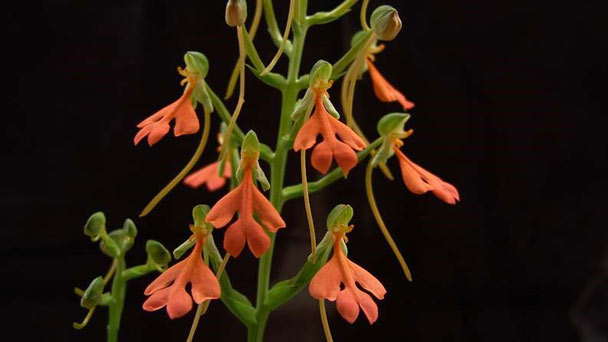
Echeveria Imbricata (Blue Rose Echeveria) is a popular low growth ornamental garden plant. Although Echeveria Imbricata are quite drought-tolerant, they can be made even more spectacular by regular deep watering and fertilizing. Echeveria Imbricata are less tolerant to frost and shade. In temperate climates, most species lose their lower leaves during the winter. Echeveria Imbricata is a vibrant succulent with a rosette of flat grey-green leaves that, when ripe, can freely drift into large solid masses 4 to 6 inches tall.
In the garden, it goes from fable to cover difficult places, with little soil and little irrigation: perfect for a rockery or sloping areas. Its low bearing and the ability to sprout greatly simplifies the work.
On the terrace, you can also grow Echeveria Imbricata in a pot. Orient it to the sun or in the middle shade. In very extreme climates is better to protect from direct sunlight.
If the potted plants choose porous materials such as ceramics or terracotta. They should be wide containers preferably and with suitable holes in the base. It is a good idea to add some element before the substrate to improve the insulation of the roots: gravel or volcanic stone, for example.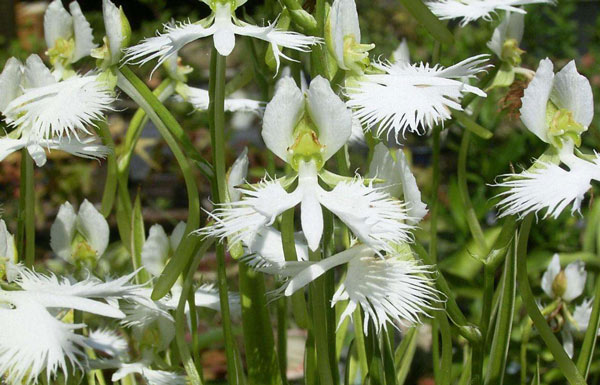
Carefully detach a small rosette from the stem.
Then, fill a small nursery pot with adequate substrate (soil mix, sand and compost).
Mark a hole with your fingers.
Delicately place the rosette.
Finally, press the soil down around the buried stem of the small rosette.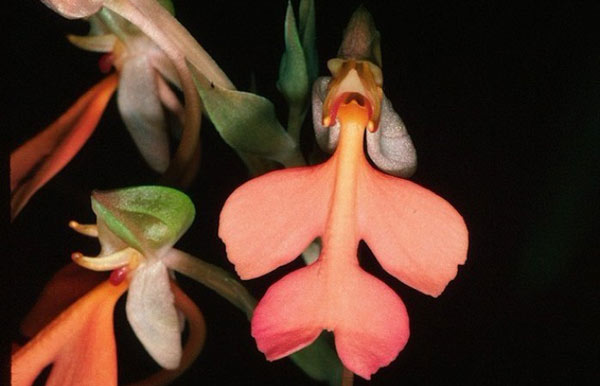
Even though Echeveria Imbricata originates from a hot, arid area, and is used to those conditions, the Blue rose echeveria still needs some protection from the very hot afternoon sun in summer. Therefore it should be placed in a position that receives some dappled shade.
If you decide to keep your Blue Rose Echeveria indoors, try to place the pot in a room that gets lots of natural light. If you are in the northern hemisphere, a room with a south-facing window would be best.
When preparing the soil, it is recommended to use a half-and-half mixture of cactus potting soil, and mineral grit. The mineral grit should contain coarse sand and either perlite or pumice or even a combination of all 3 elements. This will allow for sufficient drainage.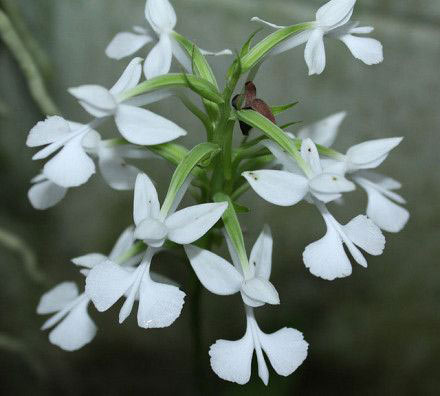
Treat aphids and mealybugs with insecticides like neem oil. Spraying the Echeveria with cold water to remove the aphids isn't recommended. The water may collect inside the rosettes and lead to overwatering.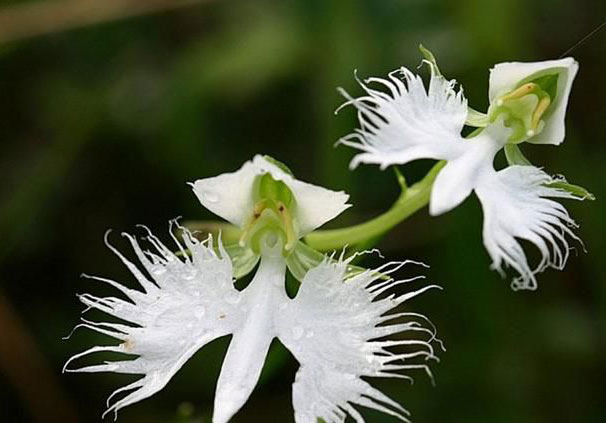
If Blue Powder's roots remain drenched in water for an extended period, they could start rotting. Once the roots begin to rot, infection will develop and spread throughout the plant right away.
Discoloration is a sure sign of root rot. If you see the leaves turning into a brownish or blackish color, cut off the infected sections right away with a pair of sterilized and sharpened garden shears.
Then, check the roots. Gently pull out the plant and shake off the excess soil to search for rotting roots. If you see any, cut these rotted parts with the garden shears then allow the plant to dry completely before replanting in fresh, well-draining soil.
Pest Infestation
Mealybugs and aphids enjoy drinking the sap out of Echeveria Imbricata. Once the plant has lost its sap, it will die.
Keep pests away by removing fallen and dead leaves from the base of the plant. The dead leaves are used by the mealybugs as a nesting place. Spray Blue Powder with neem oil once-a-week to discourage the pests from infesting.
You can wipe off the white, cotton-like substances left behind by the mealybugs with a piece of cotton that has been soaked in denatured alcohol.
Read Next:
Echeveria Elegans Mexican Snowballs Care & Growing Guide
Echeveria Laui (Echeveria Succulent) Care Guide
Echeveria Agavoides Care & Propagation
Echeveria Pulvinata (Chenille Plant) Care & Propagation Guide
Echeveria Nodulosa (Painted Echeveria) Care Guide
Echeveria Setosa: Grow & Care for Mexican Firecracker
Echeveria Black Prince Succulent Grow & Care Guide
Echeveria Runyonii Topsy Turvy Grow & Care Guide
Echeveria Takasago No Okina Care Guide
Echeveria Mebina Care Guide
Where to Grow Echeveria ImbricataHow to Grow Echeveria Imbricata (Blue rose echeveria)Echeveria Imbricata Propagation with SeedsEcheveria Imbricata Propagation with Stem CuttingsEcheveria Imbricata Propagation with LeavesEcheveria Imbricata Propagation with OffsetsHow to Care for Echeveria Imbricata (Blue rose echeveria)Echeveria Imbricata Light RequirementsEcheveria Imbricata Soil CareEcheveria Imbricata WateringEcheveria Imbricata Temperature & Humidity CareEcheveria Imbricata FertilizerEcheveria Imbricata Pests & Diseases CareEcheveria Imbricata (Blue rose echeveria) FAQGrow Echeveria Imbricata indoors or outdoors?Is Echeveria Imbricata Toxic for Cats and Dogs?Why is my Echeveria Imbricata Succulent Dying?Does Echeveria Imbricata Produce Flowers?
Where to Grow Echeveria Imbricata
Some people grow Echeveria Imbricata as an indoor plant and it works well.In the garden, it goes from fable to cover difficult places, with little soil and little irrigation: perfect for a rockery or sloping areas. Its low bearing and the ability to sprout greatly simplifies the work.
On the terrace, you can also grow Echeveria Imbricata in a pot. Orient it to the sun or in the middle shade. In very extreme climates is better to protect from direct sunlight.
If the potted plants choose porous materials such as ceramics or terracotta. They should be wide containers preferably and with suitable holes in the base. It is a good idea to add some element before the substrate to improve the insulation of the roots: gravel or volcanic stone, for example.

How to Grow Echeveria Imbricata (Blue rose echeveria)
Echeveria Imbricata Propagation with Seeds
A feasible way to propagate echeveria imbricata is by collecting seeds from the flowers after it blooms. After the plant blooms, the flowers close up again. That’s when Echeveria Imbricata plants hold tiny seeds in their pods. These seeds can be harvested when dry and planted. The seeds will sprout and new plants will develop.Echeveria Imbricata Propagation with Stem Cuttings
Echeveria Imbricata produces small suckers at the base of stems, and these can be replanted and take root easily.Carefully detach a small rosette from the stem.
Then, fill a small nursery pot with adequate substrate (soil mix, sand and compost).
Mark a hole with your fingers.
Delicately place the rosette.
Finally, press the soil down around the buried stem of the small rosette.
Echeveria Imbricata Propagation with Leaves
Carefully remove a few leaves of Echeveria Imbricata, close to the stem. Place them in a dish on top of a layer of soil, and water lightly every few days. As soon as they start sprouting shoots, they can be planted in a pot of soil.Echeveria Imbricata Propagation with Offsets
Echeveria Imbricata ‘Blue Rose’ propagates from the offsets. To be able to propagate from the mother plant, you should wait several years for the main plant to produce an offset. To start this process, use a sharp knife and remove an offset from the main Echeveria Imbricata plant. When you remove the offset, clean the extra soil from it. Before replanting, wait for a few days to allow it to callous. Use well-draining soil for your new succulent plant. Don’t forget to water when the soil dries out.
How to Care for Echeveria Imbricata (Blue rose echeveria)
Echeveria Imbricata Light Requirements
The blue rose echeveria needs a lot of direct sunlight. It should be planted in a spot that gets full sun to partial shade. It needs at least 6 hours of direct sunlight a day.Even though Echeveria Imbricata originates from a hot, arid area, and is used to those conditions, the Blue rose echeveria still needs some protection from the very hot afternoon sun in summer. Therefore it should be placed in a position that receives some dappled shade.
If you decide to keep your Blue Rose Echeveria indoors, try to place the pot in a room that gets lots of natural light. If you are in the northern hemisphere, a room with a south-facing window would be best.
Echeveria Imbricata Soil Care
When planting the Blue Rose Echeveria, it is crucial that the soil has excellent drainage. One of the biggest enemies of Echeveria Imbricata is excessive water. The container should have good drainage holes at the bottom.When preparing the soil, it is recommended to use a half-and-half mixture of cactus potting soil, and mineral grit. The mineral grit should contain coarse sand and either perlite or pumice or even a combination of all 3 elements. This will allow for sufficient drainage.
Echeveria Imbricata Watering
Echeveria Imbricata is well adapted to all parts of the Inland Empire in sunny exposures with normal winter rains and low amounts of summer irrigation. The chart shown below provides a recommended baseline guide to the monthly irrigation schedule and volume of supplemental water needed to maintain healthy growth throughout the average year. It should be noted there are several months indicated by an asterisk when winter rains often provide sufficient moisture and irrigation is not needed. The high and low range of moisture indicates Echeveria Imbricata can grow with varying amounts of water; little supplemental water is needed during summer following the flowering cycle.
Echeveria Imbricata Temperature & Humidity Care
Ideal daytime temps of Echeveria Imbricata are in the 70s F; nighttime, 40-60 F. They can’t handle soil temps above 100 F or below 32 F. Echeveria Imbricata like to cool off at night, adding that similar day and night temps are one reason echeverias don't do well in Florida and Hawaii (that, and high humidity). In his greenhouses on cold winter nights, Dick uses heat mats to warm the soil.Echeveria Imbricata Fertilizer
If you use bagged soil, don't fertilize Echeveria Imbricata at the first year. Feed when the plants are actively growing, but not in autumn in order to heighten color. Don’t fertilize Echeveria Imbricata when they're really pretty, and don't use anything that's more than 5% nitrogen, or the plants will grow awkward. Use 5-2-2 or 10-5-5 half-strength. Quit in November and don't feed again until February.Echeveria Imbricata Pests & Diseases Care
The Echeveria Imbricata blue rose succulent is considered a disease-free plant and doesn;t have any major disease issues. However, it's still important to watch for the usual pests, including aphids and mealybugs.Treat aphids and mealybugs with insecticides like neem oil. Spraying the Echeveria with cold water to remove the aphids isn't recommended. The water may collect inside the rosettes and lead to overwatering.

Echeveria Imbricata (Blue rose echeveria) FAQ
Grow Echeveria Imbricata indoors or outdoors?
Echeveria Imbricata (Blue rose echeveria) is suited to mild climates, and should preferably be cultivated indoors if you fear frost. Indeed, the slightest frost would terminate it.Is Echeveria Imbricata Toxic for Cats and Dogs?
Echeveria Imbricata does not appear in the list of plants that are toxic to cats and dogs that appear on the website of the American Society for the Prevention of Cruelty to Animals (ASPCA).Why is my Echeveria Imbricata Succulent Dying?
OverwateringIf Blue Powder's roots remain drenched in water for an extended period, they could start rotting. Once the roots begin to rot, infection will develop and spread throughout the plant right away.
Discoloration is a sure sign of root rot. If you see the leaves turning into a brownish or blackish color, cut off the infected sections right away with a pair of sterilized and sharpened garden shears.
Then, check the roots. Gently pull out the plant and shake off the excess soil to search for rotting roots. If you see any, cut these rotted parts with the garden shears then allow the plant to dry completely before replanting in fresh, well-draining soil.
Pest Infestation
Mealybugs and aphids enjoy drinking the sap out of Echeveria Imbricata. Once the plant has lost its sap, it will die.
Keep pests away by removing fallen and dead leaves from the base of the plant. The dead leaves are used by the mealybugs as a nesting place. Spray Blue Powder with neem oil once-a-week to discourage the pests from infesting.
You can wipe off the white, cotton-like substances left behind by the mealybugs with a piece of cotton that has been soaked in denatured alcohol.
Does Echeveria Imbricata Produce Flowers?
Yes, Echeveria Imbricata produces flowers in the summertime. The flowers are beautiful that may come out as orange-red and yellow.Read Next:
Echeveria Elegans Mexican Snowballs Care & Growing Guide
Echeveria Laui (Echeveria Succulent) Care Guide
Echeveria Agavoides Care & Propagation
Echeveria Pulvinata (Chenille Plant) Care & Propagation Guide
Echeveria Nodulosa (Painted Echeveria) Care Guide
Echeveria Setosa: Grow & Care for Mexican Firecracker
Echeveria Black Prince Succulent Grow & Care Guide
Echeveria Runyonii Topsy Turvy Grow & Care Guide
Echeveria Takasago No Okina Care Guide
Echeveria Mebina Care Guide
Latest Updated
- Benefits of Bugleweed - 7 Science-backed Health Benefits
- Bugleweed Dangers & Side Effects - Is It Poisonous?
- How to Plant Evergreen Trees - What You Should Know
- When to Plant Evergreens - Grow Guide for Evergreen Trees
- 12 Wonderful Evergreen Shrubs for Your Garden
- 12 Popular Evergreen Plants with Pictures for Beginners
- When And How To Prune A Lilac Bush Like a Pro
- How to Grow & Care for Lilac Vine (Hardenbergia Violacea)
- Japanese Lilac Tree (Syringa Reticulata) Care & Propagation Guide
- Shumard Oak Pros and Cons - What to Know
Popular Articles
- Winter maintenance of Antirrhinum Majus
- How to Grow Terminalia Mantaly Tree
- How to Grow and Care for Crossostephium Chinense
- How to grow Antirrhinum Majus in spring
- Peristeria Elata (Dove Orchid) Profile: Info & Care Guide
- Underwatered Snake Plant (Sansevieria Trifasciata) - Signs And How To Fix
- How to Care for Brazilian Jasmine Plant (Mandevilla Sanderi)
- How to Grow & Care for Graptopetalum Purple Delight in Summer
- Rosa Chinensis (China Rose): Plant Growing & Care Tips
- How to Care for Baby Sun Rose (Aptenia Cordifolia)